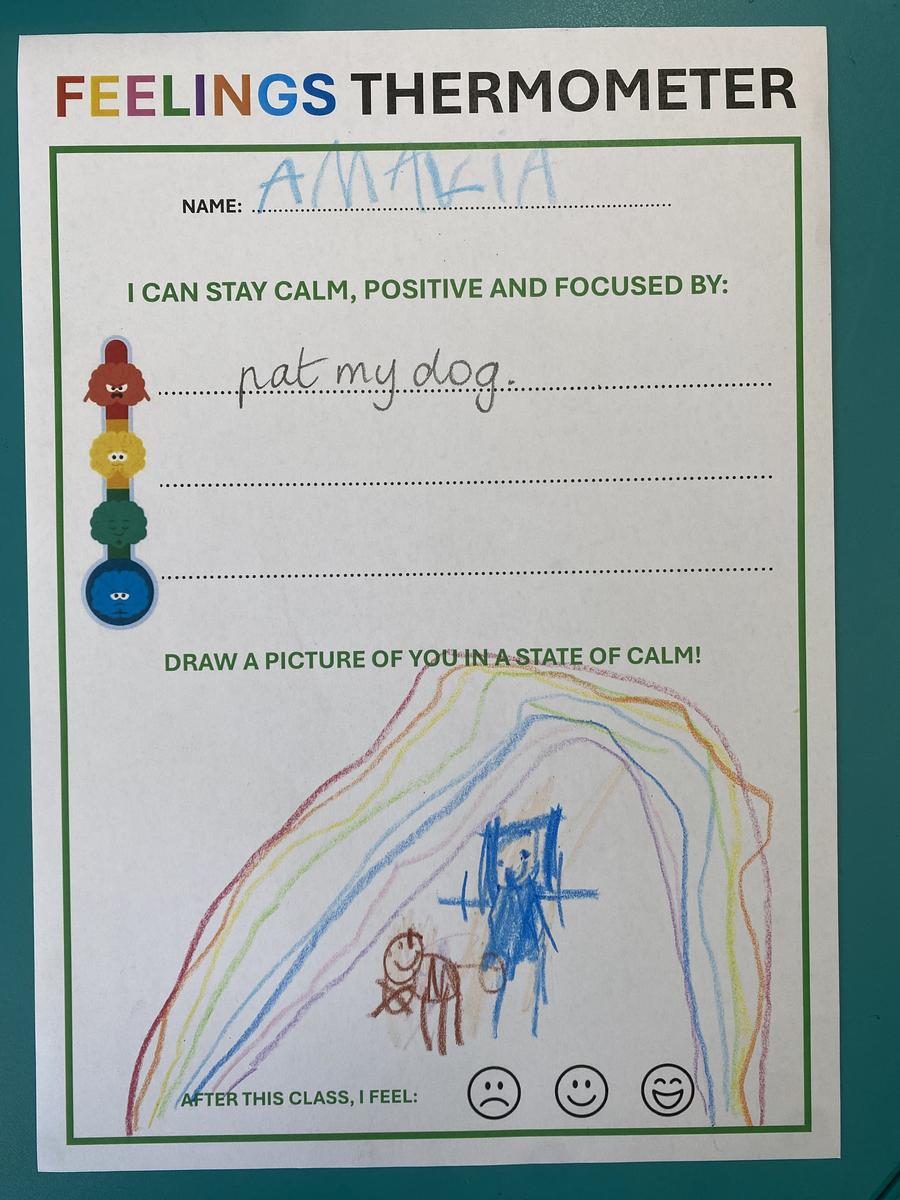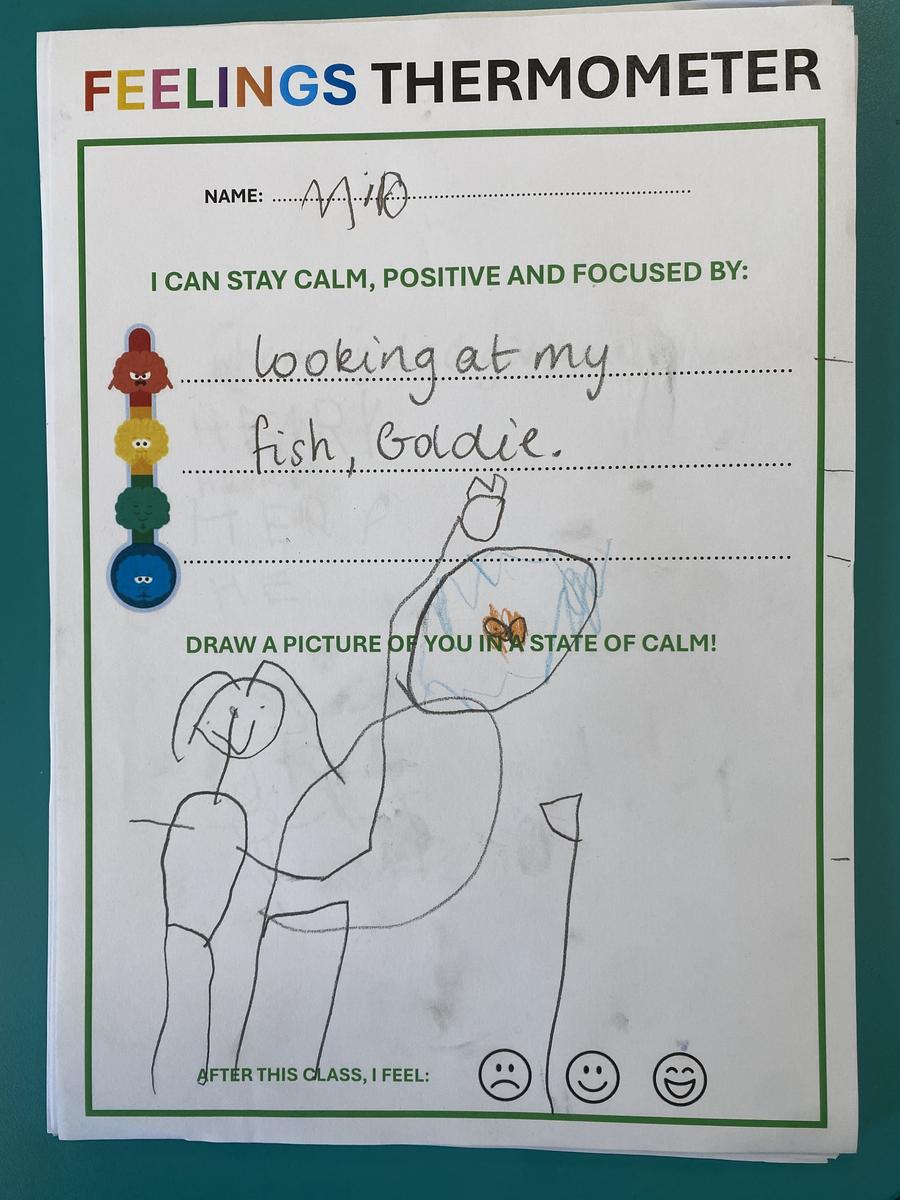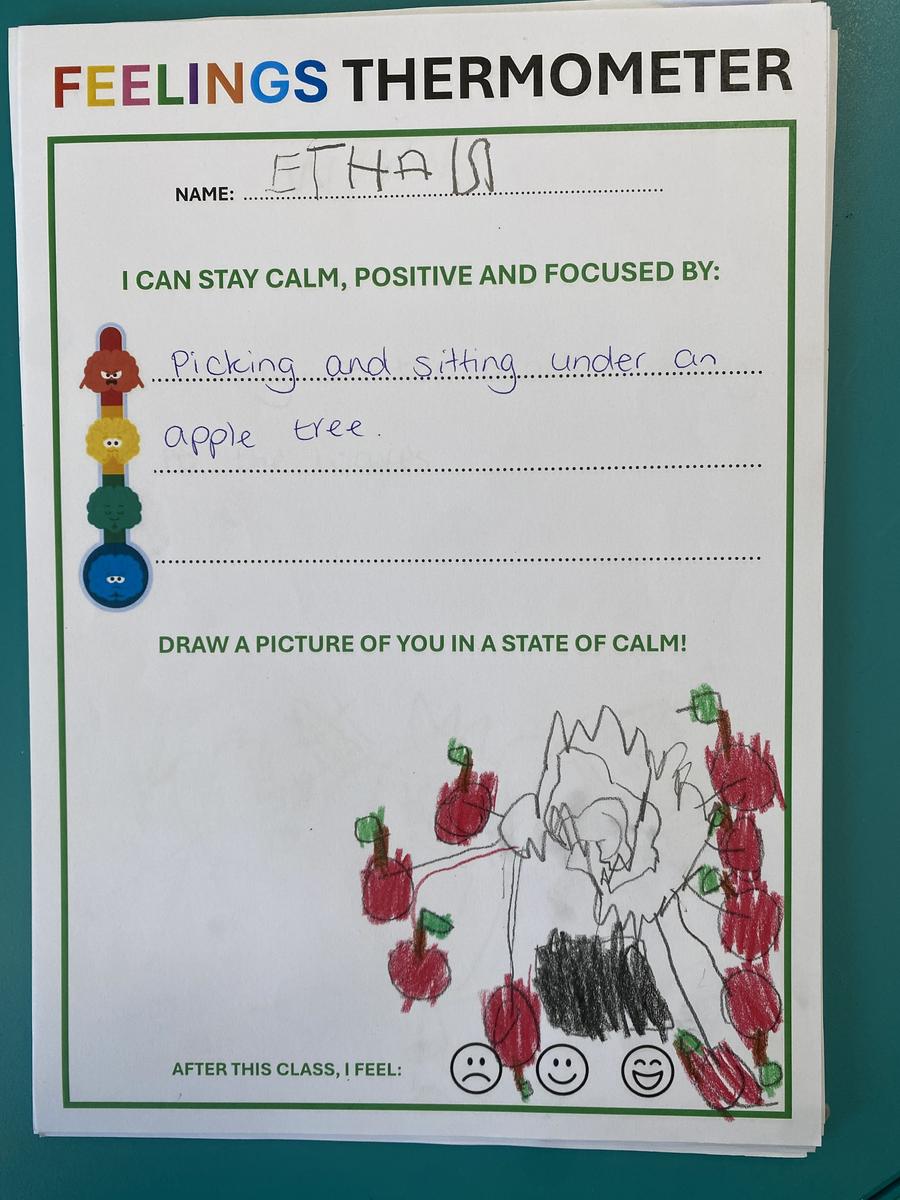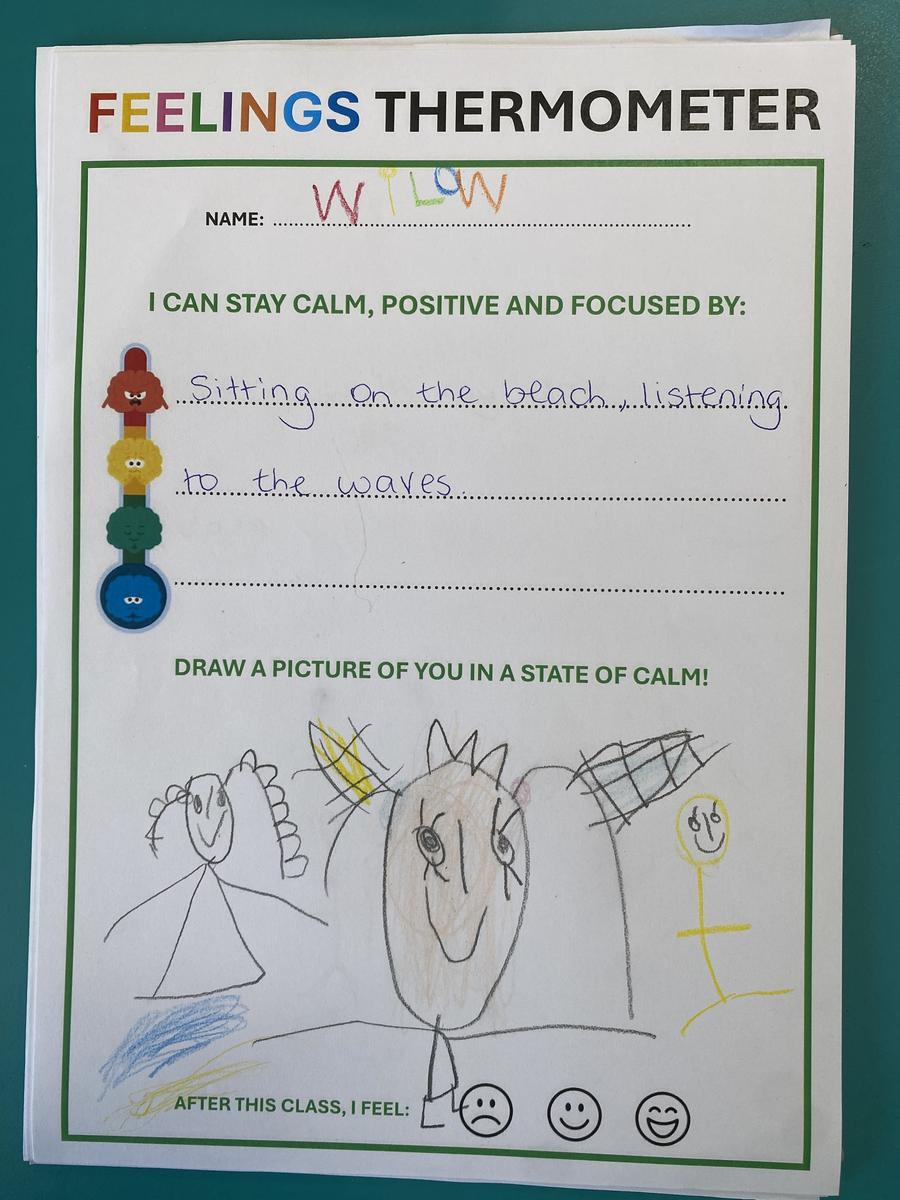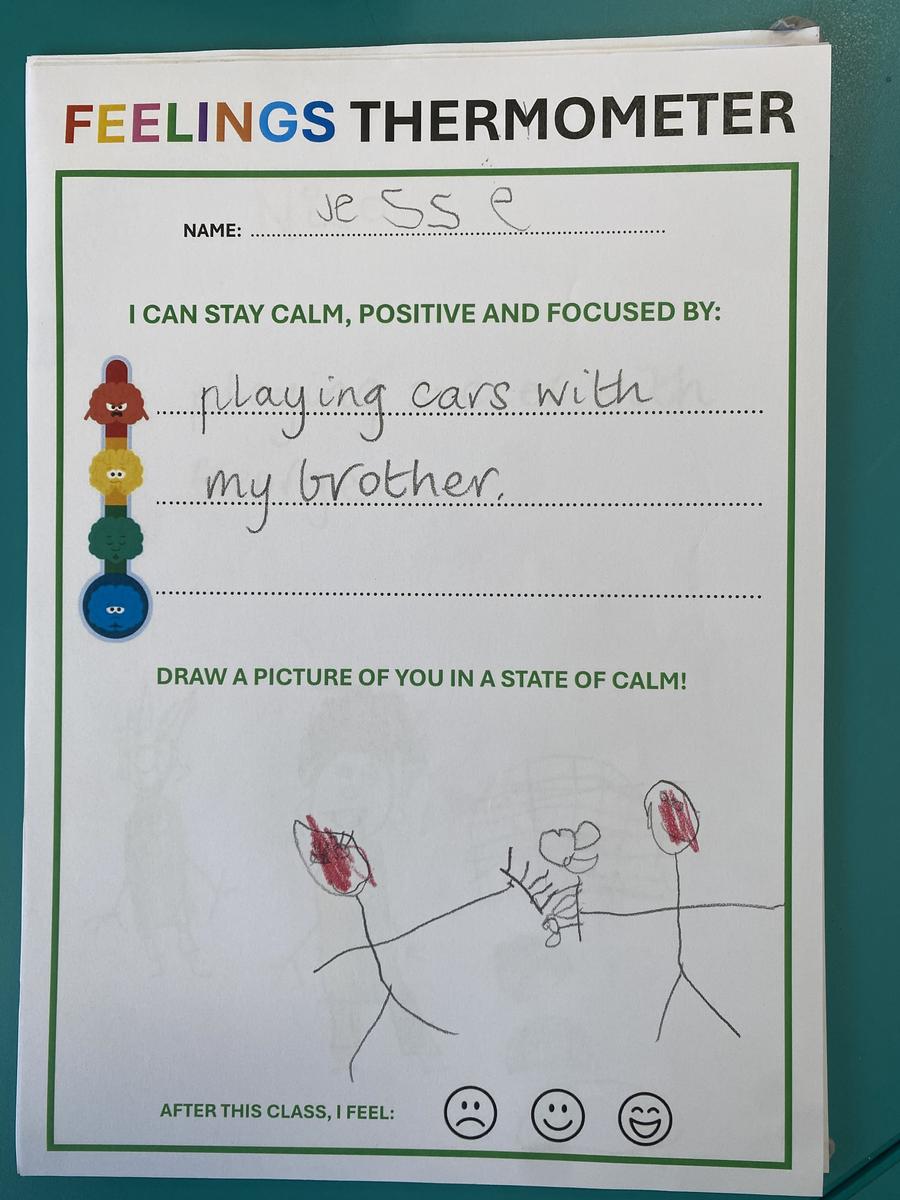SEL-Prep to Year 2

SEL (Prep to Year 2): Friday, 1 March 2024
FEELINGS THERMOMETER
Last week the students in Prep to Year 2 explored a “Feelings Thermometer” which links with the Zones of Regulation.
I have included the Feelings Thermometer, along with what kind of emotions we might be feeling (left column), how we might then behave (how I act) and some of the strategies the children can employ (what I can do about it). Before this information was revealed (colour by colour) to the children, they had the opportunity to contribute to what they thought the various colours meant, how they might be acting in the different colour zone and what some of the things they could do to re-set and come back into the green zone might be.
A wonderful suggestion by one of the grade 1 children was for them to let me know where they were currently sitting on the Feelings Thermometer. Every child then had a chance to state what colour zone they were in. This also provided us with the chance to gain an understanding of why they were in different colours.
This was also continued into the Prep classes. Interestingly, we identified that sometimes the colour zone we were in also had an impact on the colour zone that someone else might then experience.
After our discussions, I provided the children with an activity where they had to identify one (1) way for them to bring themselves back to the green zone, to feel CALM – they wrote the response and drew themselves using this strategy. The answers ranged from drawing, reading a book, patting my dog, going for a run, kicking a ball, sit in the garden, look at the clouds, make a joke.
The answers should be different as what works for one child is not necessarily going to work for another.
It is important that children know how they feel (and where they sit on this Feelings Thermometer as it gives them a language to share with others – ie, “I’m in the red zone” and an adult can then check in with them as to why) as they will gain an understanding of what they can do next for themselves.
Children can build a tool kit of strategies to help them re-set, and adults and other children can also help them with suggestions of strategies (ie, breathe in for 3 and out for 3).
Over the past couple of weeks, we have been exploring that children’s emotions will change throughout the day and that they won’t just sit in one colour. There will be movement depending on what is happening for them and around them in the day. They might be in the blue zone when they arrive because they didn’t get their favourite breakfast, but they hit the green zone when they see one of their friends or their favourite teacher when they arrive at school, but they venture into the yellow zone because someone wanted to play a different game at lunchtime, and then back into the green zone when we do a meditation after lunch.
Using colours to explore feelings is a wonderful tool, particularly for young children, and it gives us, as adults a chance to check in as to why they might be in a particular colour zone. It is a common language for all of us.
We also watched and participated in a “Mood Walk” where we explored a different range of emotions and that these emotions impact our facial expressions and the way our body moves - https://www.youtube.com/watch?v=8k32x-_aYI4. People can often see how we are feeling because of our body movement and facial expressions.
Stacey Farrell
Wellbeing Teacher | Prep to Year 2

